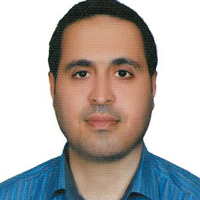Preferences, Descriptions, and Response Latency to Fractal Images Among Individuals With and Without Schizophrenia
Early simple, low-cost diagnosis of schizophrenia may accelerate the beginning of the treatment process. Here, utilizing the projective tools, including fractal images, are some of the diagnostic aids.
This study aimed to compare the preferences, descriptions, and response latency to fractal images between schizophrenic and healthy individuals.
In this case-control study, the statistical population included all schizophrenic patients hospitalized in Shafa Hospital in Rasht City, Guilan, Iran, in summer 2018 and matched healthy individuals considering the gender and age. Twelve fractal images were shown to schizophrenic patients and healthy people, and their psychological projections to these pictures were recorded.
For the image called extraviganze, the latency time to elicit the descriptions in patients was noticeably more than that in the healthy group (t=2.465, df=58, P=0.017). Meanwhile, the patients’ interest in dark and dreadful fractals such as fractal beings, North, and Apophys eyes was significantly higher than that in the healthy group (P<0.05). However, people with schizophrenia refrained from bright, light fractals with a regular geometric/graphical structure such as Gridspace and redf-shift images (P<0.05). The people with schizophrenia provide less appropriate associations and more irrelevant descriptions, especially about the abstractive and complex fractals, compared to the healthy group.
The latency to elicit descriptions for fractal images in people with schizophrenia is longer than that in the healthy group, and they have more pauses, irrelevant, and incoherent speech when describing more abstractive images. People with schizophrenia prefer darker, more dreadful images and avoid clear, luminous, and fractal images with a regular geometric/graphical pattern.
-
The mediating role of positive thinking in the relationship between loneliness and aggression with depressed mood in 8-12 year old students
Zahra Nejati, Seyyed Valiolah Mosavi, , *
Journal of New Approach to Children's Education, -
Description of lived experiences of women and men with miscarriage
Mohammad Hosseini Nia*, , Azra Zebardast, Amir Qorbanpoor Lafmejani
Rooyesh-e-Ravanshenasi, -
Validation and Normalization of the Questionnaire of Adult Responses to the Symptoms of Children with Chronic Diseases
Yasaman Larijani, , Azra Zebardast*, Shohreh Malek Nejad, Bahram Darbandi
Journal Of Guilan University Of Medical Sciences,




